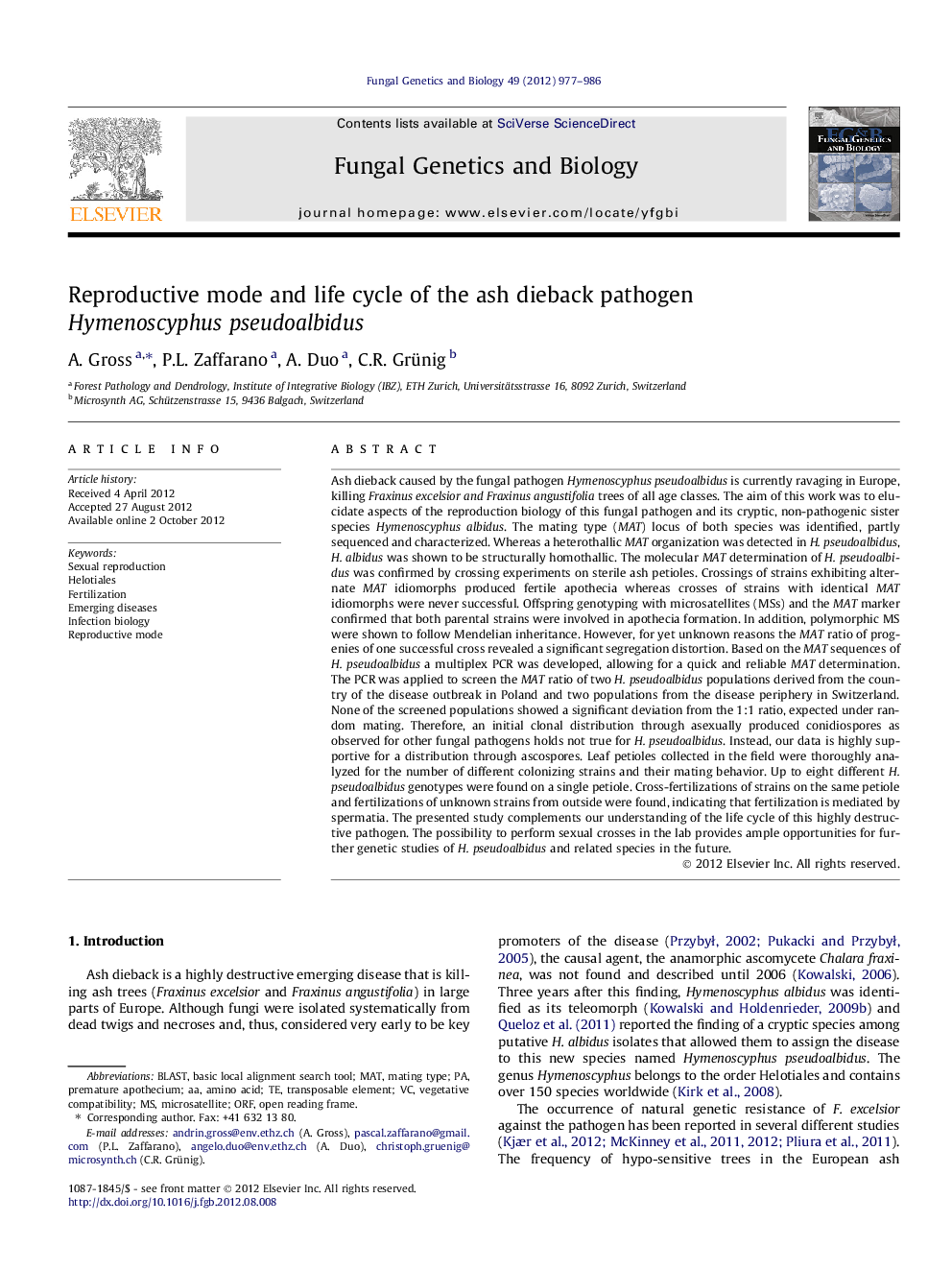| کد مقاله | کد نشریه | سال انتشار | مقاله انگلیسی | نسخه تمام متن |
|---|---|---|---|---|
| 2180895 | 1095241 | 2012 | 10 صفحه PDF | دانلود رایگان |

Ash dieback caused by the fungal pathogen Hymenoscyphus pseudoalbidus is currently ravaging in Europe, killing Fraxinus excelsior and Fraxinus angustifolia trees of all age classes. The aim of this work was to elucidate aspects of the reproduction biology of this fungal pathogen and its cryptic, non-pathogenic sister species Hymenoscyphus albidus. The mating type (MAT) locus of both species was identified, partly sequenced and characterized. Whereas a heterothallic MAT organization was detected in H. pseudoalbidus, H. albidus was shown to be structurally homothallic. The molecular MAT determination of H. pseudoalbidus was confirmed by crossing experiments on sterile ash petioles. Crossings of strains exhibiting alternate MAT idiomorphs produced fertile apothecia whereas crosses of strains with identical MAT idiomorphs were never successful. Offspring genotyping with microsatellites (MSs) and the MAT marker confirmed that both parental strains were involved in apothecia formation. In addition, polymorphic MS were shown to follow Mendelian inheritance. However, for yet unknown reasons the MAT ratio of progenies of one successful cross revealed a significant segregation distortion. Based on the MAT sequences of H. pseudoalbidus a multiplex PCR was developed, allowing for a quick and reliable MAT determination. The PCR was applied to screen the MAT ratio of two H. pseudoalbidus populations derived from the country of the disease outbreak in Poland and two populations from the disease periphery in Switzerland. None of the screened populations showed a significant deviation from the 1:1 ratio, expected under random mating. Therefore, an initial clonal distribution through asexually produced conidiospores as observed for other fungal pathogens holds not true for H. pseudoalbidus. Instead, our data is highly supportive for a distribution through ascospores. Leaf petioles collected in the field were thoroughly analyzed for the number of different colonizing strains and their mating behavior. Up to eight different H. pseudoalbidus genotypes were found on a single petiole. Cross-fertilizations of strains on the same petiole and fertilizations of unknown strains from outside were found, indicating that fertilization is mediated by spermatia. The presented study complements our understanding of the life cycle of this highly destructive pathogen. The possibility to perform sexual crosses in the lab provides ample opportunities for further genetic studies of H. pseudoalbidus and related species in the future.
► The mating type loci of Hymenoscyphus pseudoalbidus and Hymenoscyphus albidus were identified and partly sequenced.
► H. pseudoalbidus exhibits a heterothallic and H. albidus a homothallic mating system.
► The mating type ratio of H. pseudoalbidus populations does not deviate from a 1:1 ratio expected under random mating.
► Conidia of H. pseudoalbidus act as spermatia.
► A method allowing controlled crosses of H. pseudoalbidus strains was developed.
Journal: Fungal Genetics and Biology - Volume 49, Issue 12, December 2012, Pages 977–986